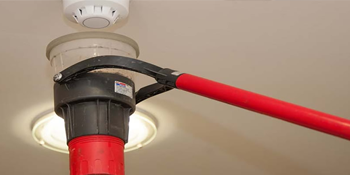Fire Alarm Servicing and Maintenance
All our work work is carried out in conjunction with all British standards.
Ensuring that your fire alarm system is in working order at all times is vital.

Not only that, you must conform to The Regulatory Reform (Fire Safety) Order by maintaining your fire detection and alarm systems and having a schedule in place.
At Fire & Security Systems we provide a comprehensive maintenance and service package to suit every budget and scenario.
Our qualified and experienced Engineers are trained on all types of fire panels so you can be confident that when we have carried out a routine inspection, your system is in correct working order.
Within your maintenance package, you have access to an Engineer and technical support 24/7 to assist with any system faults you may experience.
The following information lists the testing and maintenance schedule that are required under BS5839: Part 1:2002 for all fire alarm systems.
Onsite training can be provided to a member of staff responsible for the fire alarm system i.e. the Fire Warden.
The points covered will include:
- How the system works and how to test the call points (legal requirement)
- What to expect the system to do.
- How to prevent false activation.
This inspection and test is carried out by an experienced fire alarm engineer and will include:
- Check all previous log book entries.
- Check all standby power supplies (incl. on power fail)
- Cause fire activation from all zones
- Check all control panel functions.
- Check any links to alarm receiving centre.
- Check any printer interfaces.
- Visually inspecting of any structural or occupancy changes to assess whether changes to the fire alarm system are required.
- Testing of the switch mechanism of every call point.
- Inspection, test and cleaning of every automatic smoke and heat device.
- Inspection of any readily accessible cables regarding fire system.
- Checking any cause and effect programme.
- Any further checks required recommended by manufacturer.
- Record all findings in log book.
- Issue testing certificate.